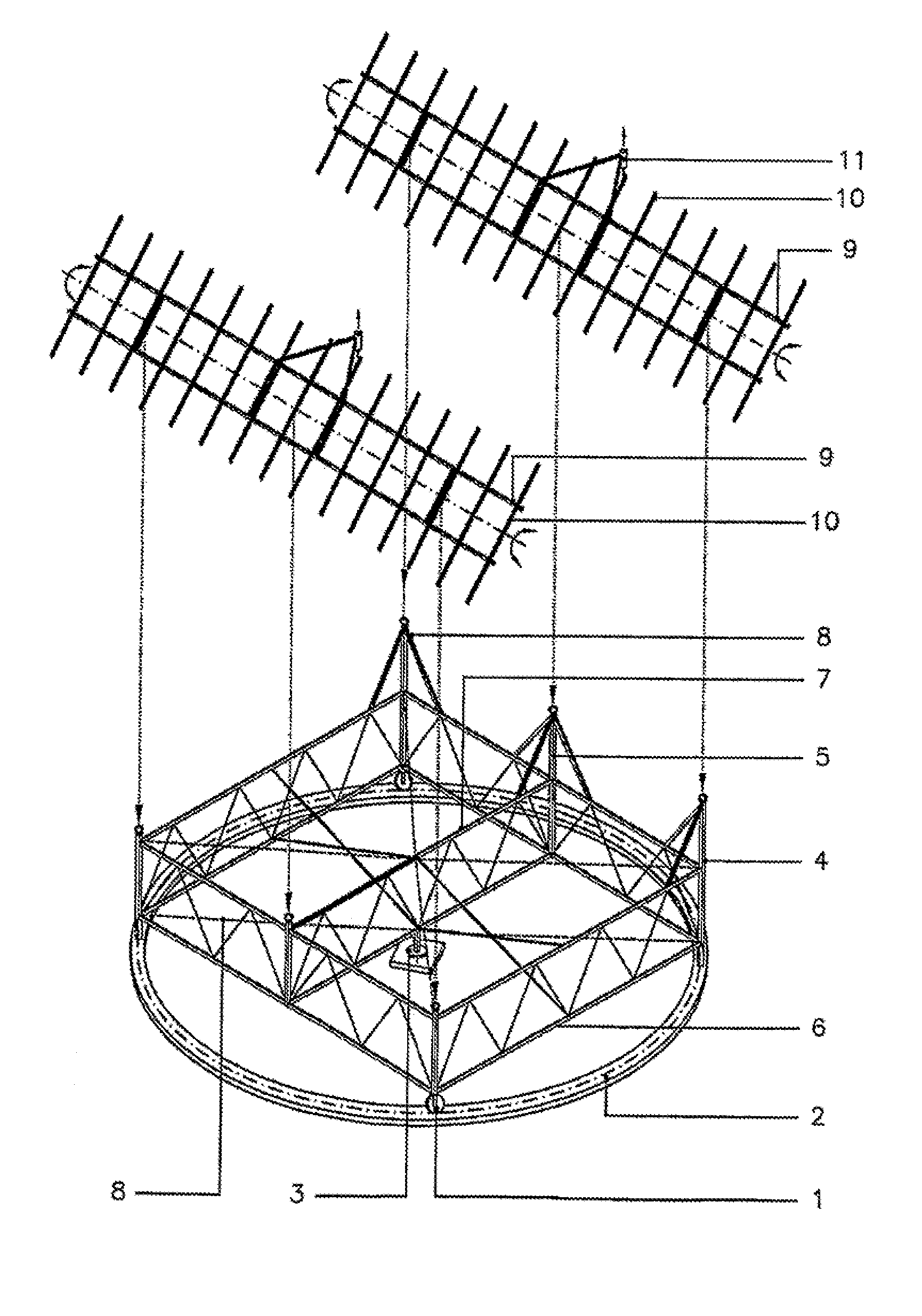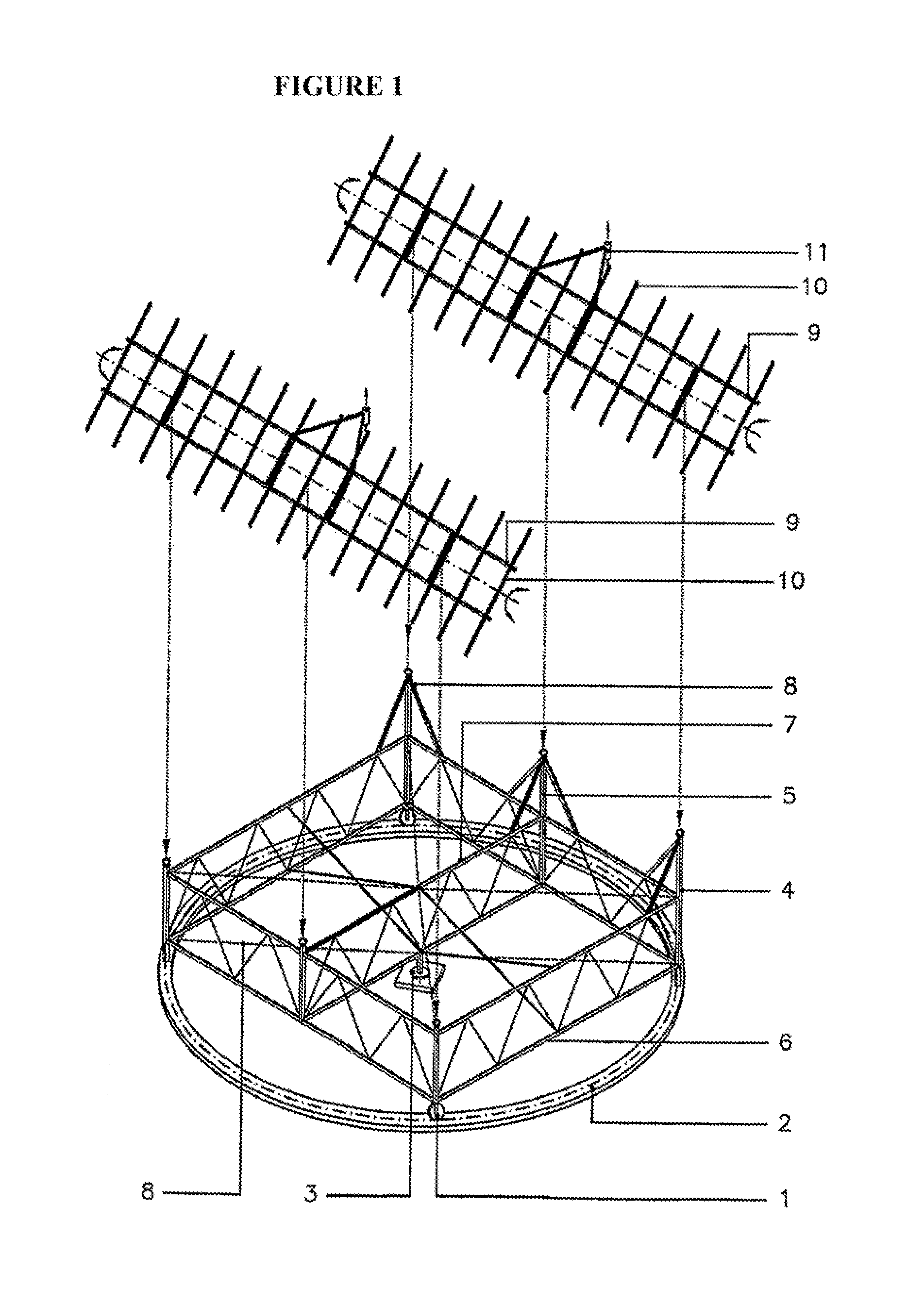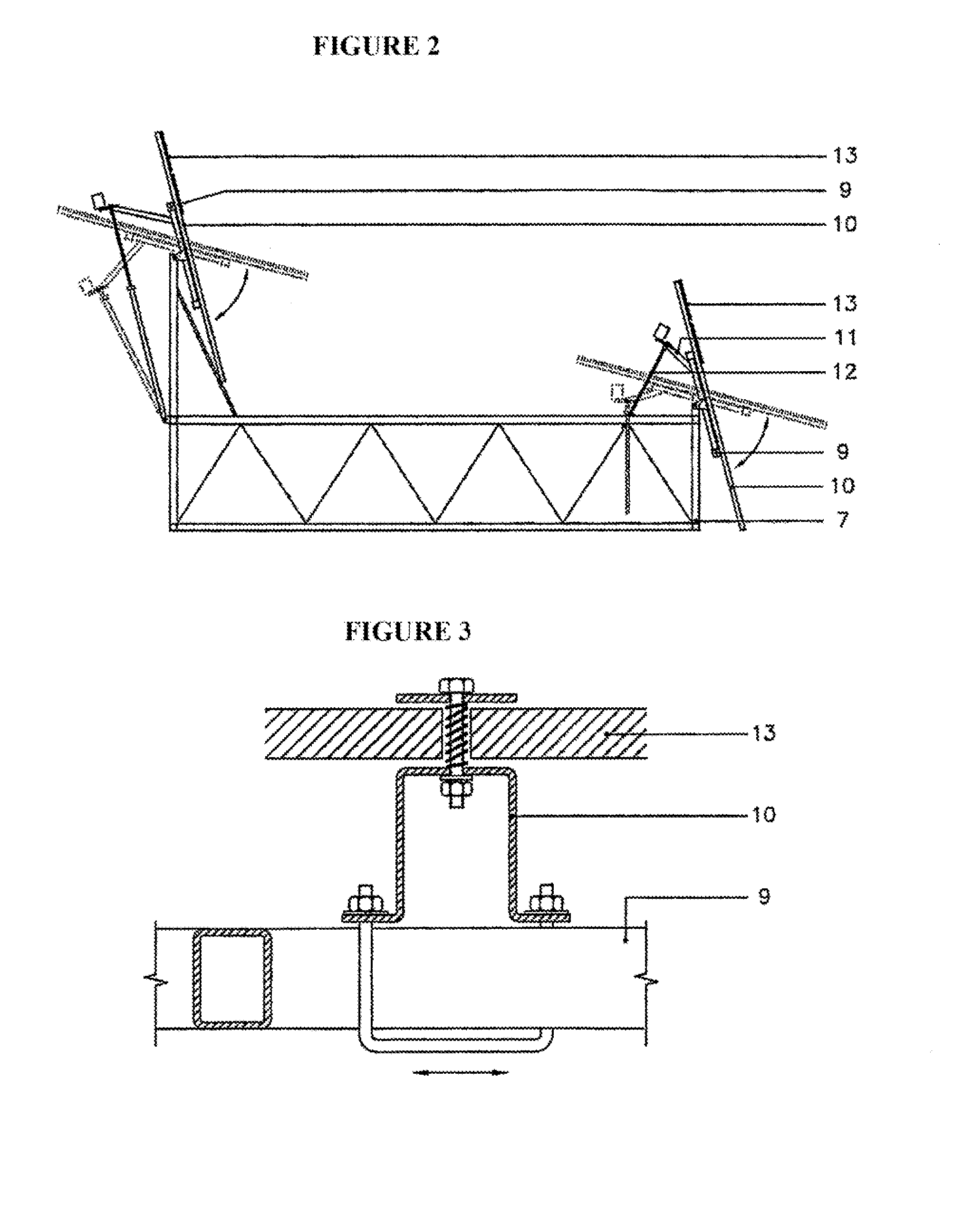Solar tracker with two axes on a rolling platform, with two boards for solar panels
a solar tracker and rolling platform technology, applied in the direction of photovoltaics, moving/orienting solar heat collectors, heat collector mounting/support, etc., can solve the problems of slow and complicated mounting of panel-boards, insufficient support for wind loads, and inapplicability to the equatorial system, so as to facilitate the positioning of solar panels, facilitate the installation of solar panels, and facilitate the effect of rapid and safe mounting
- Summary
- Abstract
- Description
- Claims
- Application Information
AI Technical Summary
Benefits of technology
Problems solved by technology
Method used
Image
Examples
Embodiment Construction
[0037]The numbers given to each part of the system are used in all the diagrams. Following this guide, the tracker is made up of a platform and at least two boards for solar panels
[0038]FIG. 1 shows a preferred outline of the tracker, with a support platform that has a square base, and two boards for solar panels. The platform has motorised rollers (1) at its corners. These circulate on a track (2) that takes the form of a circular crown. The tracker turns on this track around the central vertical axis (3), which is anchored in a foundation in the earth.
[0039]The rolling track (2) is achieved by using a concrete of low plasticity, which is put in place without any form, and which incorporates a metal band reinforcement. In favourable conditions the solar tracker can be supported directly above the natural terrain improved with either lime or cement.
[0040]The platform is dismountable and is composed of latticed girders, and pillars (4) at its corners. The girders (6) fix to the pilla...
PUM
 Login to View More
Login to View More Abstract
Description
Claims
Application Information
 Login to View More
Login to View More - R&D
- Intellectual Property
- Life Sciences
- Materials
- Tech Scout
- Unparalleled Data Quality
- Higher Quality Content
- 60% Fewer Hallucinations
Browse by: Latest US Patents, China's latest patents, Technical Efficacy Thesaurus, Application Domain, Technology Topic, Popular Technical Reports.
© 2025 PatSnap. All rights reserved.Legal|Privacy policy|Modern Slavery Act Transparency Statement|Sitemap|About US| Contact US: help@patsnap.com



